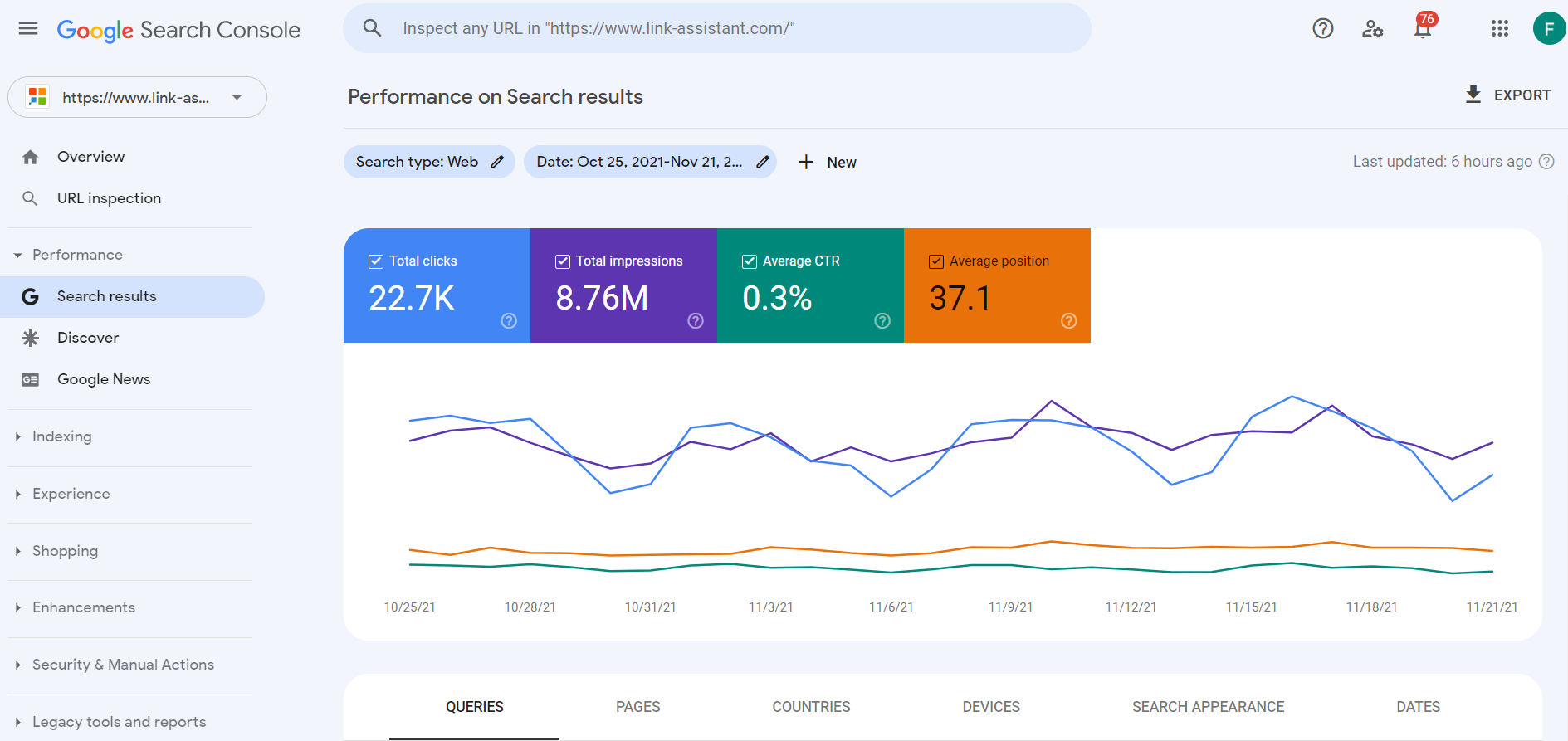
Mastering SEO: An In-Depth Guide to Google Webmaster Tools and Optimizing Rankings

Mastering SEO: An In-Depth Guide to Google Webmaster Tools and Optimizing Rankings
Disclaimer: This post includes affiliate links
If you click on a link and make a purchase, I may receive a commission at no extra cost to you.
Google Webmaster Tools
Contents
- What is Google Webmaster Tools?
- What Google Webmaster tools are aimed for?
- What are the limitations of Google Webmaster tools?
- What’s the difference between Search Console and Google Analytics?
- What are the alternatives to Google Webmaster tools?
- Related articles
- References
What is Google Webmaster Tools?
Google Webmaster Tools is the former name of Google Search Console , a powerful free platform Google provides for webmasters to track their websites’ technical SEO health and performance.

The service was started in 2005 as a Google Sitemaps tool, and developed into Google Webmaster Central a year later. In May 2015, Google introduced Google Search Console[1] , a revamped version of Google Webmaster Tools that was aimed to improve the work of the people who wanted their websites to be available online.
Search Console acquired its modern looks in 2018[2] : Google added more functionalities and tools required for webmasters, such as Index Coverage report, Search performance report, AMP status report, and so on.
Google Webmasters was also the name of the platform’s blog[3] which lasted until 2020 and then was changed for Google Search Central because “web professionals do not identify themselves as webmasters anymore. They’re more likely to call themselves Search Engine Optimizer (SEO), online marketer, blogger, web developer, or site owner, but very few “webmasters.”
What Google Webmaster tools are aimed for?
Search Console (formerly Google Webmaster Tools) allows plethora of things to check with your site to ensure that it is available to web searchers:
- Check performance in search results: impressions, clicks, pages’ average position, click through rates, spot pages in Google News and Discover.
- Check indexing report: inspect indexed and non-indexed pages, check indexing of video results, and submit sitemaps.
- Check page experience: check page experience on desktops and mobiles, Core Web Vitals, check mobile usability of a site, reveal HTTPS security issues.
- See enriched results on Google SERPs: check issues and correctness of structured data implementation, such as breadcrumbs and FAQs schema, review snippets, etc.
- Look out for security actions and manual penalties.
- Check a site’s internal and external links.
What are the limitations of Google Webmaster tools?
Most reports in Search Console in the Experience and Enhancements tabs cover only a sampling of your site’s URLs[4] . However, each URL can be inspected with the URL Inspection Tool, tested live, and submitted for crawling.
Tables in Search Console are limited to showing only 1,000 rows of data. It also allows exporting a sample of links up to only 100,000 rows. Besides, some data (such as rare queries) can be hidden due to privacy concerns.
What’s the difference between Search Console and Google Analytics?
Google Search Console helps webmasters audit their own website and learn how the search engines crawl and index its pages; also it lets you monitor the appearance of your pages in search (but not organic ranking), and maintain your site’s technical SEO.
Meanwhile, Google Analytics is more suitable for digital marketing managers willing to find information about their clicks, traffic channels, audiences, user behavior, and the success of their content on landing pages.
Besides, you can link Search Console and Google Analytics to provide a more stitched experience regarding landing pages, queries, and traffic.
Both tools are insightful and powerful Google tools for webmasters and website owners, moreover, they are available completely free of charge.
What are the alternatives to Google Webmaster tools?
There are many alternative webmaster tools to Google Search Console. First, other search engines provide their own webmaster tools, as they may discover and index URLs a bit differently. For example, there are Yahoo and Bing Webmaster Tools, Yandex Metrica, and others.
Generally, you don’t need to sign up for a webmaster tool to start ranking in its search engine. However, each tool gives clues about indexing and crawlability and helps fix issues.
Second, there are site audit tools that webmasters can use to audit their sites and check discrepancies with Google Search Console, in case there are glitches or the data and tools are insufficient.
For example, WebSite Auditor performs all similar tasks considering website audit and on-page SEO audits. With this tool, you can also check:
- A site’s indexing and crawlability
- A site’s localization issues
- Duplication issues
- Issues with canonical URLs, broken pages, long redirects,
- Explore deeper HTTP response codes
- Audit and generate sitemaps
- Audit and generate robot.txt instructions
- Detect page experience and mobile usability issues
- Audit content on pages
- Check internal and external backlinks
Related articles
Website Audit with Google Search Console
65 Ways to Use WebSite Auditor
10 Ways to Use Website Auditor’s Custom Search
References
1. https://developers.google.com/search/blog/2015/05/announcing-google-search-console-new 2. https://developers.google.com/search/blog/2018/01/introducing-new-search-console 3. https://www.searchenginejournal.com/google-search-central/387232/ 4. https://support.google.com/webmasters/answer/96568?hl=en
Also read:
- [Updated] 2024 Approved Ace the Art of YouTube Reactions - 3 Innovative Approaches Unveiled
- [Updated] In 2024, Dominate Digital Dialogue The Top 10 Masterful IGTV Practices for Branding Success
- A Virtual Verification Blueprint to Spot Fraudulence
- Apply These Techniques to Improve How to Detect Fake GPS Location On Oppo Reno 8T | Dr.fone
- FLV & M4Vファイルの免費オンラインコンバート - Movavi
- Gratuit MP4 Vers ASF en Direct: Guide Complet Avec Movavi
- How To Repair Non-Responsive Windows 11 PIN Login Errors Effectively With MyRecover
- In 2024, Selecting Snug Winter Scenes as Video Sets
- In 2024, Tips of Transferring Messages from Tecno Camon 20 Pro 5G to iPhone 14/15 | Dr.fone
- Képernyők Ötödik Generációja: Windows Ebben 11 Rögzítési Folyamatokkal
- Online Free Tool: Transform Your FLV Videos Into High-Quality AVI by Movavi
- Online MP3-Converteren Vanwege ALAW, Gratis en Efficiënt - Movavi
- Top 15 Cloud Storage Plans 2024 Edition Analysis
- 무료 인터넷을 활용하여 Movavi 서비스를 사용하여 3G2 프라이빗 변환 - 원형 배송
- Title: Mastering SEO: An In-Depth Guide to Google Webmaster Tools and Optimizing Rankings
- Author: Scott
- Created at : 2025-01-21 07:03:20
- Updated at : 2025-01-27 08:02:59
- Link: https://win-top.techidaily.com/mastering-seo-an-in-depth-guide-to-google-webmaster-tools-and-optimizing-rankings/
- License: This work is licensed under CC BY-NC-SA 4.0.